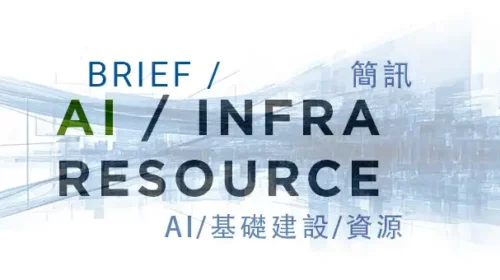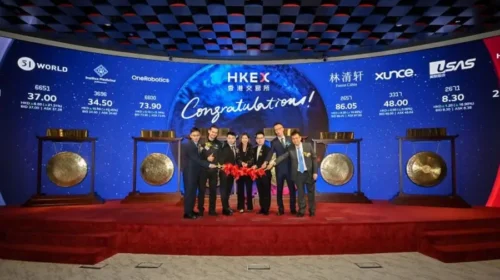The company recently completed the first phase of its transformation from auto trader to bitcoin miner with its acquisition of additional machines with 18 EH/s of capacity
By Doug Young
Cango Inc. (CANG.US) is a company in transition, spending its first decade in car finance and auto trading before making a major pivot to bitcoin mining late last year. Since then, the company has sold off most of its original car business, and has set up a global bitcoin mining network on four continents, even as its headquarters remains in China.
The company passed a recent milestone when it completed its previously announced purchase of mining machines with 18 EH/s of capacity, bringing its total to 50 EH/s. Following an overhaul of its shareholding structure, Cango is now controlled by Enduring Wealth Capital Ltd., a Singaporean company, with 36.74% of the company’s voting rights. Golden TechGen Ltd., another Singaporean company, holds 12.23% of its voting rights, while Cango co-founders Zhang Xiaojun and Lin Jiayuan hold 12.07% of its voting power.
Juliet Ye, Cango’s director of investor relations, recently spoke to Bamboo Works to discuss how the company plans to manage its new business and where it’s headed next.
Q: Is Cango’s 50 EH/s of mining capacity with the latest acquisition sufficient, or will the company acquire more in the next 12 months?
A: Reaching 50 EH/s is a significant milestone that positions us among the top global miners. But it’s not the endpoint. Our strategy is dynamic — we continuously evaluate opportunities to scale efficiently. Market conditions, hardware advancements and energy partnerships will drive decisions on further acquisitions. Our goal is to add another 10 to 15 EH/s by the end of this year. If adding capacity aligns with our goals of cost leadership and operational resilience, we’ll pursue it aggressively.
Q: What’s Cango’s strategy for determining its ideal mining capacity?
A: Our capacity strategy hinges on three pillars: scale for competitiveness, aiming for top-tier market share; cost efficiency, prioritizing high machine utilization and low energy costs; and risk diversification, both geographic and operational. We target a balance where economies of scale maximize profitability without overextending capital. The 50 EH/s threshold was chosen to achieve about 6% of bitcoin’s global hashrate — a sweet spot for influence and efficiency.
Q: Where is Cango’s mining capacity located, and what’s the geographic strategy?
A: Our footprint is intentionally global and decentralized. Among the 50 EH/s in computing capacity, 57% is in the U.S., spread across 15 states and more than 30 locations. Another 26% is in East Africa, taking advantage of low-cost hydropower. The remainder is in Paraguay and the Middle East. This spread mitigates regulatory and supply-chain risks and taps into underutilized energy markets. We avoid jurisdictions with unclear crypto policies, focusing instead on regions welcoming mining as a grid-balancing tool.
Q: Does Cango plan to relocate its headquarters from China?
A: Since exiting all China-based operations in May 2025 and deregistering as a “China-concept stock,” our business is entirely overseas. We’re evaluating optimal global headquarters locations. Factors include regulatory clarity, talent access and proximity to mining hubs. Any relocation would be announced formally, but our operations are already decentralized and compliant.
Q: Can you tell us about Enduring Wealth Capital (EWCL), and who are Andrea Dal Mas and Yu Peng, who are described as EWCL’s two key decision makers?
A: EWCL is a strategic investor focused on long-term value in digital assets. While we respect their privacy, Andrea Dal Mas and Yu Peng bring deep experience in global finance and tech investments. Their vision aligns with ours: scaling Cango into a mining leader while maintaining disciplined governance. Their 36.74% voting stake reflects confidence in our execution — not control for short-term gains.
Q: Can you tell us more about Golden TechGen (GT) and its stakeholders, Wang Ning, Youngil Kim, and Wye Sheng Kong?
A: GT emerged as a key partner through our 18 EH/s stock-settled acquisition. Wang Ning, Youngil Kim, and Wye Sheng Kong each hold equal voting rights in GT and represent a mix of tech entrepreneurship and operational expertise. Their backgrounds include semiconductor logistics and renewable energy — critical for mining efficiency. As stakeholders holding 19.85% of Cango, they’re incentivized to support our growth.
Q: What roles will Cango co-founders Zhang Xiaojun and Lin Jiayuan play going forward?
A: Post-transition, the two founders collectively retain approximately 18.5% ownership and 12% voting power of the company, ensuring continuity. Their adaptability has guided Cango through multiple pivots, and they’re committed to this chapter.
Q: Can you explain Cango’s ‘mine and hold’ strategy and rationale, which it referred to in its last quarterly report?
A: We absolutely embrace a long-term “mine and hold” philosophy — reflected in our retention of 100% of mined bitcoin, which totaled 3,879.24 as of June 30. But this isn’t a rigid “never sell” approach. Instead, we’ve engineered a dynamic, triple-trigger mechanism. This lets us capture upside while systematically hedging against volatility.
First, strategic profit-taking: If bitcoin surpasses $150,000, about a 50% premium to current prices, we execute phased divestments. This isn’t speculation — it’s about rewarding shareholders and recycling capital into high-ROI growth initiatives like hashrate expansion.
Second, liquidity buffers. For operational needs, such as debt servicing or infrastructure upgrades, we prioritize collateralized bitcoin financing, such as lending against holdings, over sales. This preserves exposure to appreciation while meeting cash-flow requirements.
Third, black swan resilience: In extreme scenarios — like regulatory shocks or systemic market fractures — we retain flexibility to divest portions of the holdings. This ensures continuity without compromising our core position.
All triggers are monitored in real-time via our adaptive risk-control system, tracking metrics like price volatility, liquidity coverage ratios, and reserve health. By translating bitcoin’s volatility into strategic leverage — not passive risk — we balance capital efficiency with uncompromising value preservation.
Q: Would Cango mine cryptocurrencies beyond bitcoin?
A: Bitcoin remains our sole focus — its security, liquidity, and institutional adoption are unmatched.
Q: How does Cango hedge against bitcoin price volatility?
A: We view volatility as a variable to strategically navigate. Our approach combines rigorous operational hedges with the flexibility of our “mine and hold” treasury strategy. We’ll seek to renew and restructure third-party hosting contracts, including the possibility to shift from fixed-fee models to revenue-sharing agreements tied to bitcoin prices and hashrate efficiency. Our “mine and hold” strategy is fortified by the triple-trigger framework shared earlier.
Q: With a fresh $352 million in funds from the sale of your China operations, how might Cango deploy some of its capital beyond crypto?
A: While Bitcoin mining remains our core focus, we’re aggressively executing a dual-axis strategy of maximizing our computing dominance and pioneering energy independence. This isn’t diversification for its own sake, it’s about vertically integrating our value chain to achieve two goals: becoming the world’s largest computing power provider and reaching “zero-cost mining” through self-sustained green energy.
The Bamboo Works offers a wide-ranging mix of coverage on U.S.- and Hong Kong-listed Chinese companies, including some sponsored content. For additional queries, including questions on individual articles, please contact us by clicking here
To subscribe to Bamboo Works free weekly newsletter, click here





